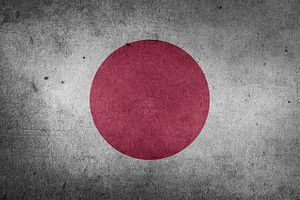Victims of Japan’s now-defunct forced sterilization law face an uphill battle in collecting compensation, with the government appealing court rulings awarding state damages.
So far 38 victims have filed lawsuits against the government in 12 different regional courts, arguing a 20-year statute of limitations should not apply as sterilization surgeries were conducted without consent.
Some courts have rejected the statute of limitations to award plaintiffs compensation. In March, the Tokyo High Court ordered the government to pay compensation to a victim. The following month, the Osaka High Court awarded a total of $376,000 to five plaintiffs who were subjected to forced sterilizations and abortions.
Between 1948 and 1996, Japan sought to “cleanse” the Japanese race of “inferior” traits by preventing people with physical disabilities, intellectual disabilities, or mental illness from bearing children. The former Eugenic Protection Law culminated in an estimated 27,000 people being subjected to the government sterilization order.
Currently, victims are entitled to a lump sum payment of $27,000. The Osaka High Court agreed with the victims that the lump sum offered by the state was negligently low. The forced sterilization relief law also stipulated a five-year deadline (until 2024) by which victims can collect payments. So far, fewer than 1,000 people have come forward to collect the money.
These recent court rulings awarding victim compensation give hope to other pending court cases. It is the first time victims have been granted justice beyond the payment offered by the government. However, victims say they struggle to be taken seriously. They also say the government’s persistence in appealing rulings calls into question its sincerity about rectifying past wrongs in line with victims’ wishes.
Both High Courts criticized the government’s refusal to compensate victims based on an expired statute of limitations as “grossly unjust.” They called the Eugenic Protection Law unconstitutional and a serious violation of human rights.
More disturbing details continue to emerge nearly 30 years after the law was finally scrapped. A parliamentary report into the nationwide practice released last week found that children as young as nine were forced to undergo sterilization surgery. Some victims say they only find out about their sterilization status after the Eugenic Protection Law was repealed in 1996. The report revealed that the surgeries were often disguised as different procedures, and local governments were pressured to increase the number of sterilization surgeries.
The majority of victims were women and 65 percent of victims had no say in the matter. Even of those who ostensibly gave their consent, many were coerced: forced to choose between keeping their reproductive rights and never being able to leave their medical facility, or being sterilized and being able to leave.
Some surviving victims have publicly spoken about their ordeal. At a press conference last week, a 77-year-old sterilization victim told the Foreign Correspondents Club of Japan that her “life had been ruined”. She said the surgery had robbed her of her simple dream of getting married and starting a family.
Surviving victims of forced sterilization say their appeals for urgent compensation based on their advanced age have been repeatedly ignored. Non-profit organizations supporting sterilization victims and disabled people are calling for a reexamination of the law behind the lump sum relief payment. They point out that the relief law did not take into account the victims’ experiences and wishes.
The Japan Council for Persons with Disabilities said an investigation into sterilization practices, the factors that led to the law being created, and the delay in issuing compensation should have been conducted after the Eugenic Protection Law was repealed in 1996. They say accountability has been pushed back for decades as a result of government inaction, leading to a situation where time is running out for the mostly elderly victims.
Last September, a U.N. committee that examined the implementation of the Convention on the Rights of Persons with Disabilities recommended the Japanese government apologize to victims of the former Eugenic Protection Law and provide relief without limiting the application period. Victims say the best way to tackle discrimination against people with disabilities is to work with them to resolve the issue.
































